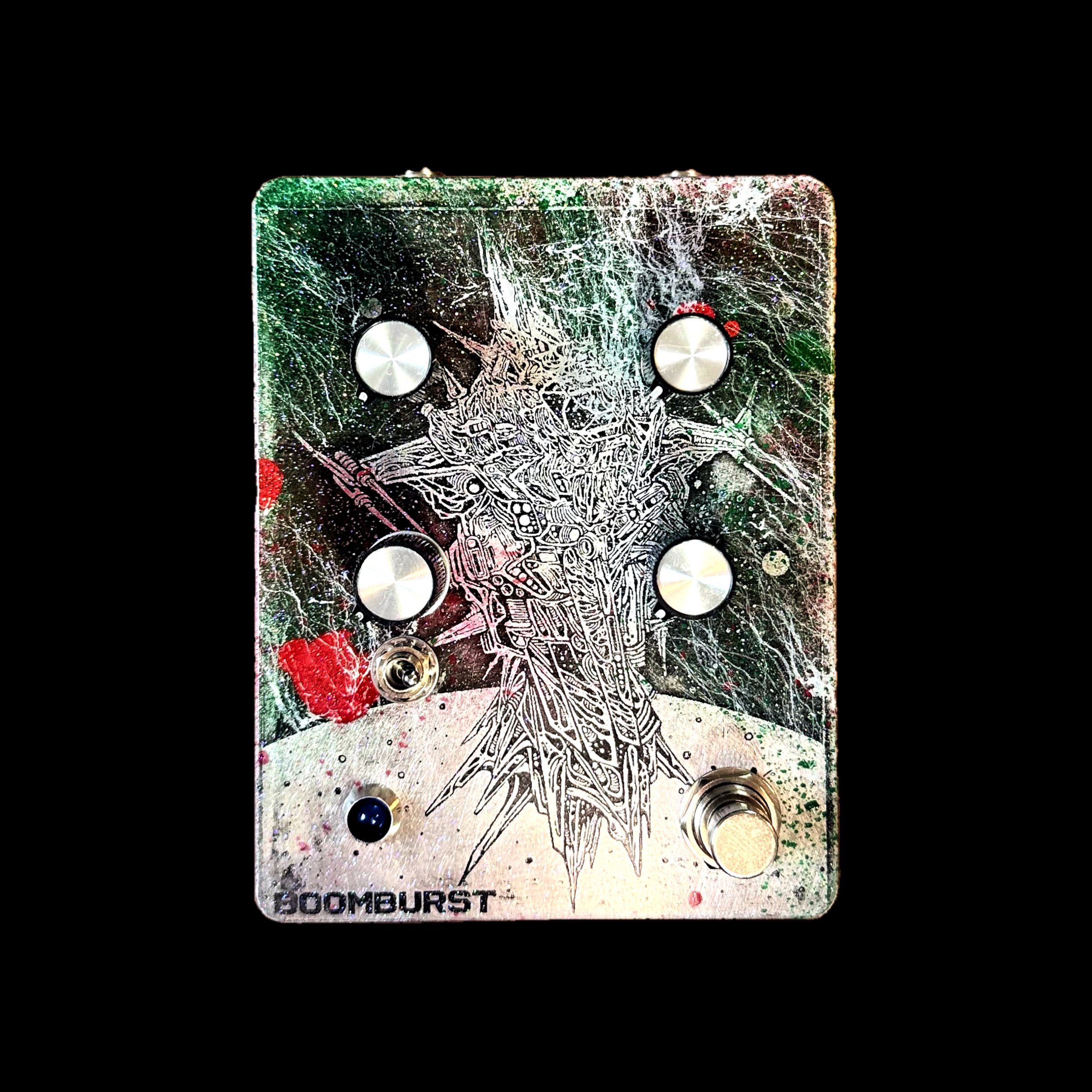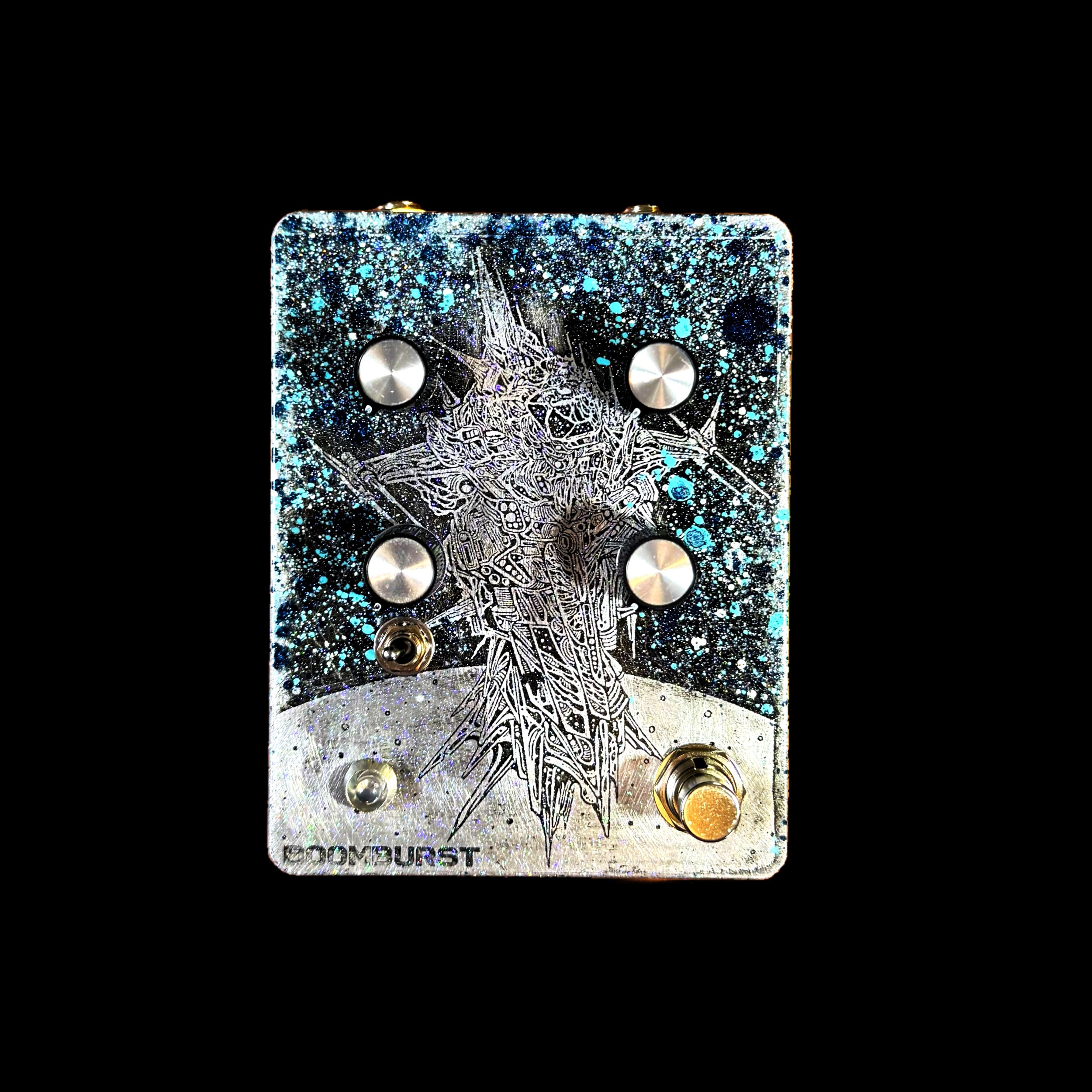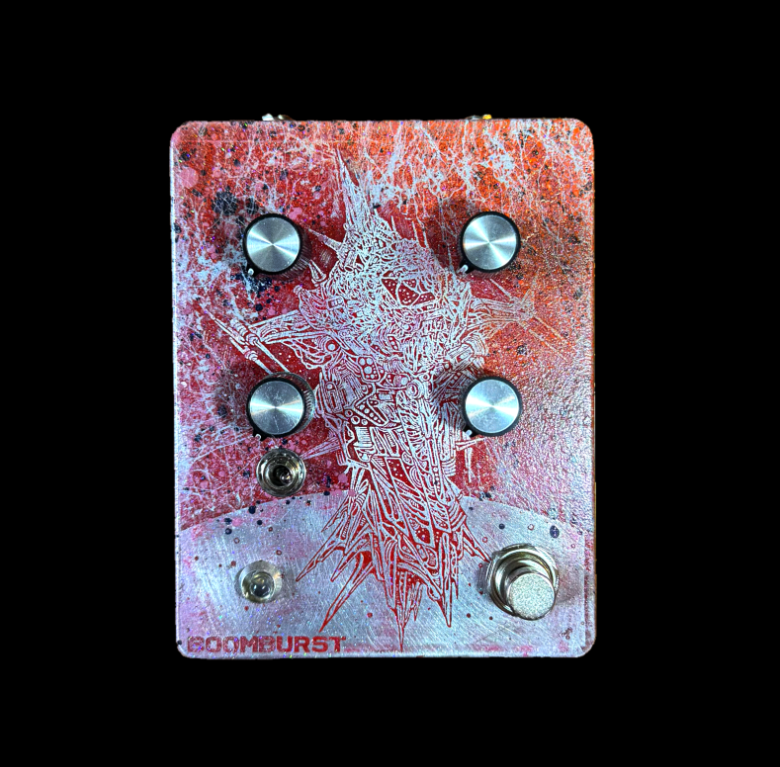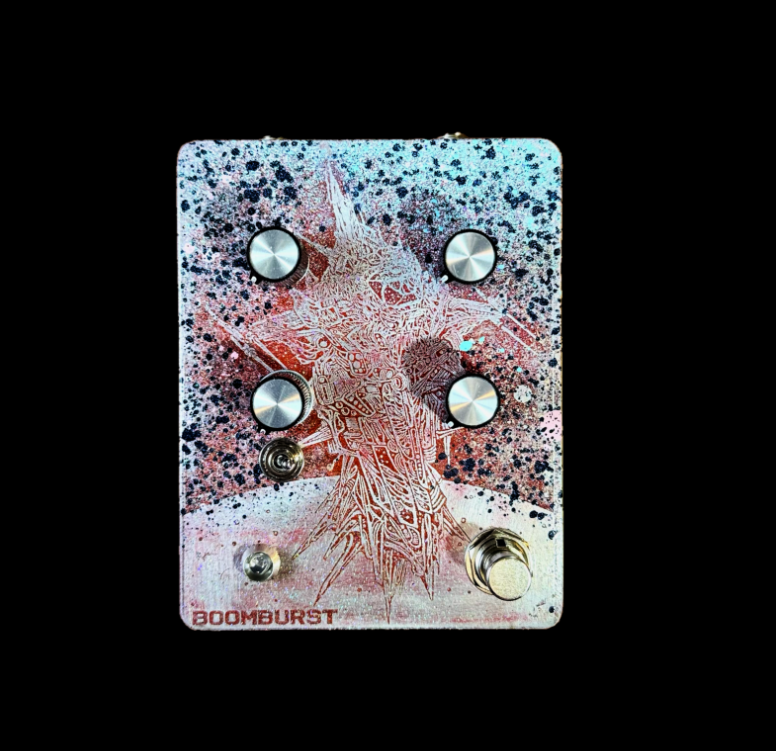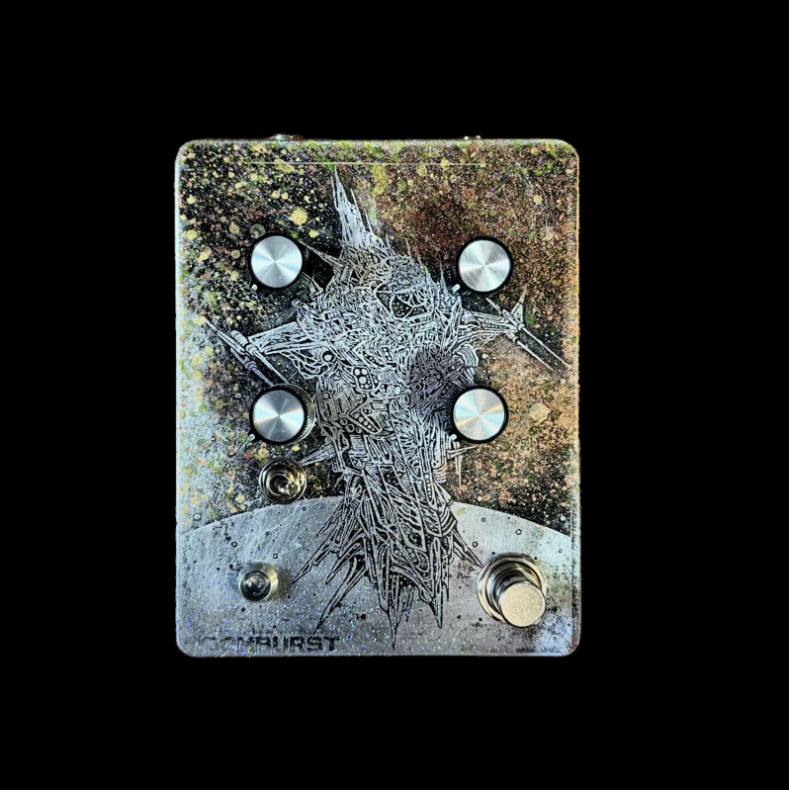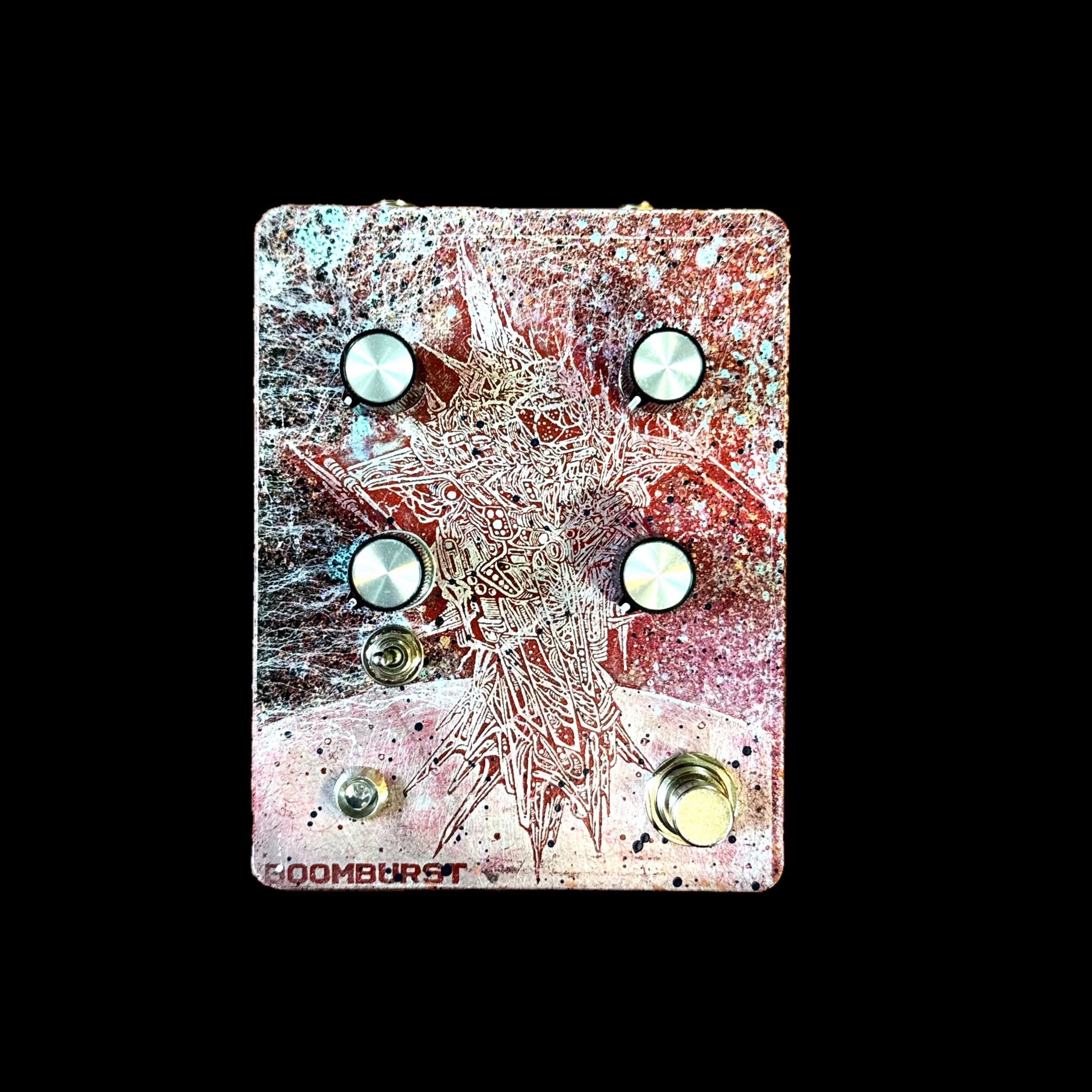Boomburst
Boomburst is a suboctave drive with PLL characteristics where your overall drive is thrown into CMOS Hex Inverting buffer that operates along with a binary counter\divider giving you different trem\vibe patterns to the drive and overall suboctave effect.
In simpler terms, Boomburst is a drive with trem/vibe that blends with high or low octave focused effects that has PLL characteristics. If you want to get fun with describing it, I like to imagine it as an octave bit drive that was used in an intense boss battle on the N64.
It can be sporadic or can have some restraint with the pseudo-random suboctave effect. This isn’t a PLL effects pedal but then again, it has characteristics to be considered as one. If this was PLL focused, we’d have triple the amount of controls and well, you know where I’m going with this.
Oh, another thing to note. It gets LOUD.
You may ask "Why does my Boomburst look different from all the rest?". The answer is that each Boomburst is it's own variant of acid etching.
Boomburst is a suboctave drive with PLL characteristics where your overall drive is thrown into CMOS Hex Inverting buffer that operates along with a binary counter\divider giving you different trem\vibe patterns to the drive and overall suboctave effect.
In simpler terms, Boomburst is a drive with trem/vibe that blends with high or low octave focused effects that has PLL characteristics. If you want to get fun with describing it, I like to imagine it as an octave bit drive that was used in an intense boss battle on the N64.
It can be sporadic or can have some restraint with the pseudo-random suboctave effect. This isn’t a PLL effects pedal but then again, it has characteristics to be considered as one. If this was PLL focused, we’d have triple the amount of controls and well, you know where I’m going with this.
Oh, another thing to note. It gets LOUD.
You may ask "Why does my Boomburst look different from all the rest?". The answer is that each Boomburst is it's own variant of acid etching.
Boomburst is a suboctave drive with PLL characteristics where your overall drive is thrown into CMOS Hex Inverting buffer that operates along with a binary counter\divider giving you different trem\vibe patterns to the drive and overall suboctave effect.
In simpler terms, Boomburst is a drive with trem/vibe that blends with high or low octave focused effects that has PLL characteristics. If you want to get fun with describing it, I like to imagine it as an octave bit drive that was used in an intense boss battle on the N64.
It can be sporadic or can have some restraint with the pseudo-random suboctave effect. This isn’t a PLL effects pedal but then again, it has characteristics to be considered as one. If this was PLL focused, we’d have triple the amount of controls and well, you know where I’m going with this.
Oh, another thing to note. It gets LOUD.
You may ask "Why does my Boomburst look different from all the rest?". The answer is that each Boomburst is it's own variant of acid etching.
Footswitches
Bypass
Turns the effect on and off. LED indicates whether Bypass is on or off.
Toggle
Left position: Low octave focused
Right Position: High octave focused
Knobs
Volume
Top left - Effect Volume
Top right - Drive volume
Both Volumes blend with one another.
Gain
Bottom Right - Gain
The gain knob controls overall gain of drive as you will notice that the overall effect will be more intense
as the gain knob is increased.
Rotary
Bottom left - Rotary
The rotary knob switches between 8 different patterns. With top left knob turned down, you will notice a trem/vibe effect to the drive. The trem/vibe effect reacts to your attack and will increase speed the more attack you give.


